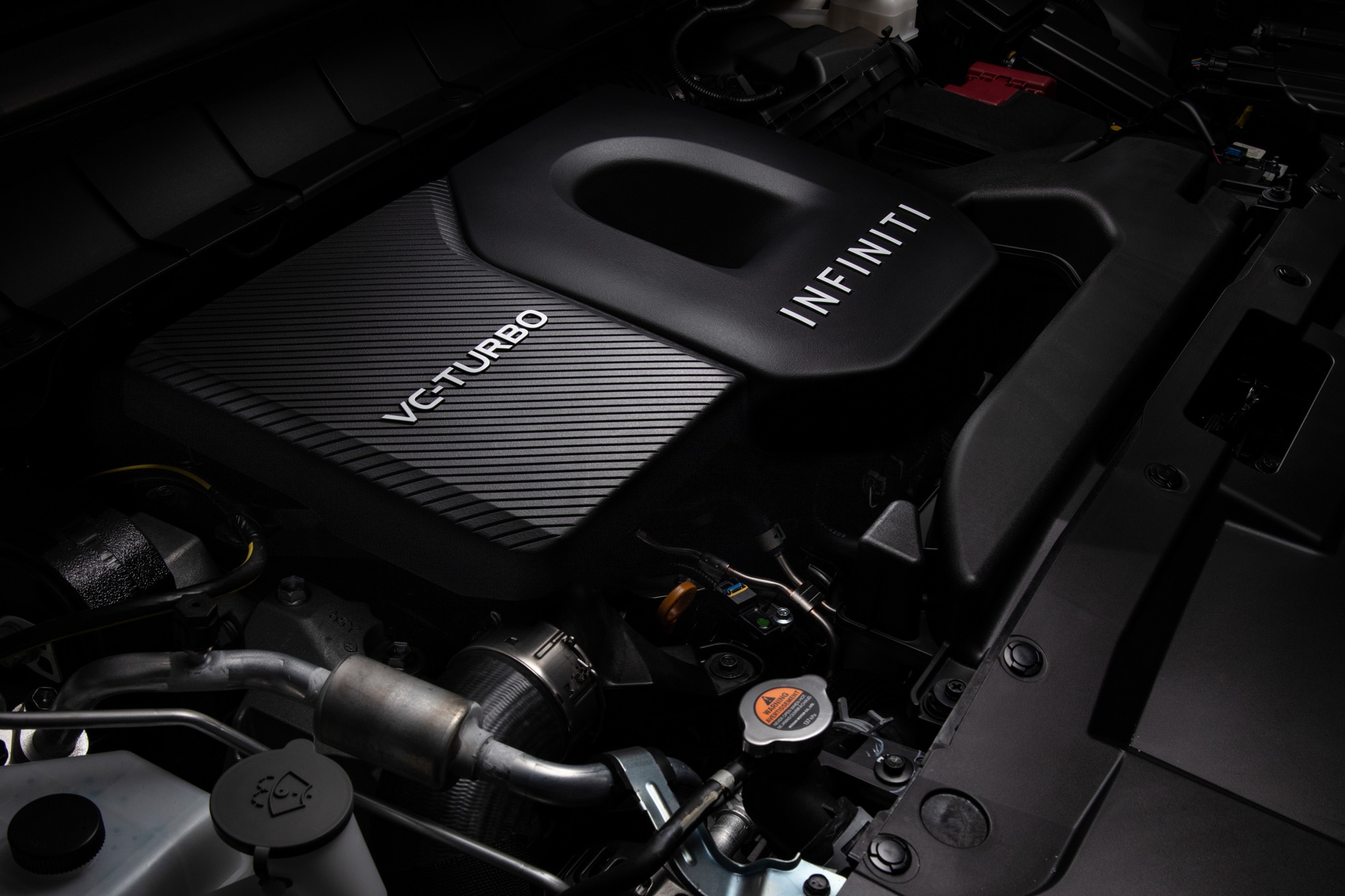Why Turbochargers Have Grown in Popularity
Automakers bet heavy on a technology that helps improve fuel economy.
 Infiniti
Infiniti
Some 25 years ago, at the turn of the century, turbochargers were rare in the U.S. According to the U.S. Environmental Protection Agency's Automotive Trends Report, only 1% of new vehicles came with a turbocharged engine in 2000. Nearly 20 years later, in 2019, that number had jumped to 34%. For the 2023 model year, 37% of the engines in passenger vehicles sold in the U.S. were turbocharged.
How Turbochargers Work
Internal-combustion engines need to mix fuel with air to run. To do this, small valves open intermittently to let atmospheric pressure into the cylinder. The air is pushed in at a pressure of 14.7 psi at sea level.
The amount of pressure is important because air and gasoline must be mixed in a very precise ratio for the engine to run at its best. At 10,000 feet above sea level, air pressure is only 10.2 psi. Less pressure equals less air and the car's fuel-injection system injecting less fuel, which means less power. For this reason, nonturbocharged engines seem slow at higher elevations.
Turbochargers use otherwise wasted exhaust energy to spin a small turbine — hence "turbo" in the name — directly attached to an impeller, called the compressor wheel, that pushes more air into the engine than what is supplied by atmospheric pressure. The amount of additional air pressure, combined with a precisely metered additional amount of fuel, is called turbo boost.
Turbo boosting can increase the pressure of air and fuel flowing into the combustion chamber compared to naturally aspirated, or nonturbo, engines. Once the turbines get spinning, this means more power.
Why Turbochargers Have Become Popular
Automakers generally used turbochargers at first to add boost and improve the engine performance of existing engines. Notable examples include the original 1975 Porsche 911 Turbo and the 1978-'87 Buick Regal/Grand National/GNX. Soon, they discovered that turbochargers allowed them to make engines smaller than those typically used.
Because of the greater amount of power generated by turbochargers, a smaller engine could produce the same amount of power as a larger, naturally aspirated engine. This helped fuel efficiency because, all else being equal, larger engines typically burn more fuel than smaller engines.
In addition, automakers can reduce the number of cylinders by using turbochargers. Today, this is almost always paired with direct injection, which increases fuel efficiency, reduces emissions, and increases power.
Smaller, Turbocharged Engines Can Get Better Fuel Economy
The new model changeover from the 2017 Honda Accord to the 2018 Accord is a good example of how reducing engine size and cylinder count increases fuel efficiency.
In 2017, buyers could get their Accord with a nonturbocharged 3.5-liter V6. It made 278 horsepower and 252 pound-feet of torque. The EPA fuel-efficiency estimates for the V6 were 21/32/24 mpg city/highway/combined.
The base Accord that year came with a nonturbocharged, direct-injected 2.4-liter four-cylinder and a fairly efficient continuously variable automatic transmission option. Its EPA ratings were 26/34/29 mpg. In the base LX and EX trim packages, it made 185 horsepower and 181 lb-ft of torque.
In 2018, the new Accord could be equipped with one of two smaller engines, both of which were turbocharged. The base engine was a turbocharged 1.5-liter engine that produced 192 horsepower and 192 lb-ft of torque with EPA estimates of 30/38/33 mpg.
The other option for 2018 was a turbocharged 2.0-liter four-cylinder engine that produced 252 horsepower and 273 lb-ft of torque. EPA estimates came in at 23/34/27 mpg.
Although both were smaller than the outgoing 2.4-liter, these new engines produced even more power and torque. Despite this power increase, the car's fuel economy still increased by 4 mpg when compared with the larger turbocharged engine. The turbocharged 2.0-liter engine serves up similar power to the V6 it replaced and is rated at 2 mpg better.
In short, this is why turbochargers have taken off in recent years. Stricter fuel-efficiency and tailpipe regulations have made automakers seek affordable ways to improve both. With turbochargers, automakers can downsize engines — some going from 2.5 liters to 1.5 liters — a simple, affordable way to give drivers power and likely increase their fuel efficiency.
Turbochargers are just one of the relatively newer powertrain technologies automakers use to improve fuel economy and reduce tailpipe emissions. For the 2023 model year, other powertrain advances that grew in popularity with automakers included gasoline direct injection (73% of vehicles), hybrid (10% of vehicles), stop-start (50% of nonhybrid vehicles), and continuously variable transmission technology (26% of vehicles) as well as automatic transmissions with seven or more forward gears (59% of vehicles).
Written by humans.
Edited by humans.
 Chris Terry
Chris TerryChris Terry has been writing about cars since his sophomore year of college. His passion led him to his first job at the United States Council for Automotive Research, where he wrote about new automotive technology developed by Ford, Chrysler, and General Motors. He went on to freelance for Popular Mechanics and AutoWeek in addition to his work at agencies representing car companies and suppliers. Outside of writing, Chris is a semi-professional musician who regularly plays all over Michigan.
Related articles
View more related articles